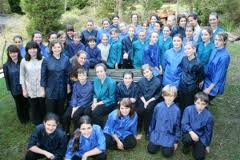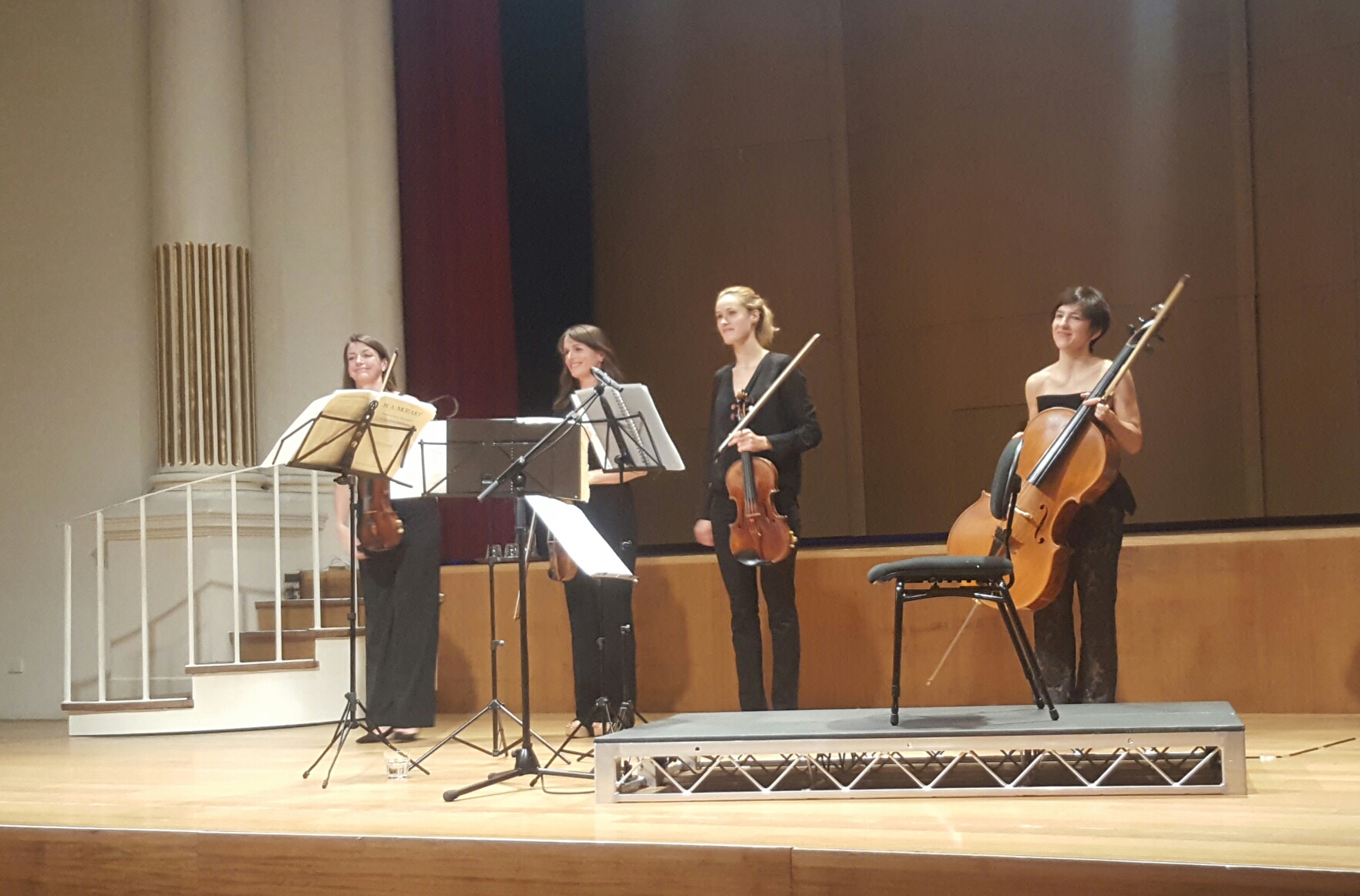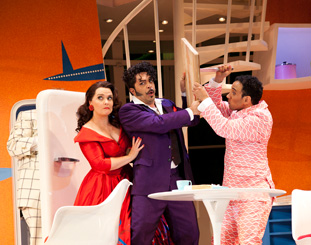Album Review: Günter Raphael streichquartette/ Acacia Quartet

Acacia Quartet’s latest CD release Günter Raphael streichquartette features three string quartets by the German composer Günter Raphael (1903 – 1960). It is the fruition of a recent project which took the quartet to Berlin for a residency, in the spring of 2017.
As with many stories, personal connections bring them to life. Acacia’s first violinist and leader Lisa Stewart studied in Cologne with Fredrik Pachla, head of the Christine Raphael Foundation and widower of Christine. Christine Raphael (d 2008) was a violinist and daughter of Günter Raphael. Her foundation aimed to “both boost the presence of Günter Raphael’s works in concerts, radio programs and on CDs as well as the musicological research of the entire legacy.” After her death, Frederik Pachla took over the administration of the foundation.
Acacia Quartet, comprising violinists Stewart and Myee Clohessy, viola player Stefan Duwe and cellist Anna Martin-Scrase, spent their time in Berlin studying and rehearsing these quartets intensively, performing them in both public and private events and finally, making this recording. On it are two early chamber works, the String Quartets No 1, opus 5 in E minor ( 1924) and No 2, opus 9 in C major (1925), in contrast with a much later work, the String Quartet No 6 opus 54 in F major (1946), also his last string quartet. The combination of works illustrates very well, Raphael’s journey through tonality and his inventiveness with form, polyphony and rhythm.
Günter Raphael was, by all accounts, precociously gifted and a voracious student. He played the viola, piano and organ and published his Op.1, a Rondo for violin, viola and piano, aged 15. He was awarded the Robert Schumann Leipzig Foundation Scholarship aged 22 and entered the Berlin Hochschule für Musik where he studied composition.
After his studies, Raphael built a successful career as a composer and teacher. His String Quartet No1 in E minor was premiered by the Busch Quartet in Berlin in 1925. A year later, the same ensemble premiered his String Quartet No 2 in C major, after which he signed his first contract with Breitkopf & Härtel and moved to Leipzig where he taught theory and composition at the State Conservatory and where his Symphony No 1 was premiered by the Gewandhaus Orchestra, conducted by Wilhelm Furtwängler.
Although the early string quartets draw on tradition for style, at a different level, Raphael uses form to challenge that tradition, writing the first string quartet as a compact two movement piece while the second is a more expansive five movements and the sixth is in three movements. Raphael was influenced by the Baroque and Classical styles in his early string quartets and this is evident in Acacia’s interpretation. The textures are lush and the polyphony is clearly defined.
The first string quartet opens in declamatory style with a tonal ambivalence that hints at things to come. The second movement begins in a lyrical Langsam und inning before moving through different moods, rhythmic and spirited, to the final fugal section.
The second string quartet’s Praeludium is anguished cry from the heart. Richly harmonic and tonally ambitious, it maintains the tension with an unresolved cadence at its end, as Raphael introduces another Fugue for the second movement. Zart und inning (Tender and intimate) uses soloistic string techniques elaborated with trills and is an opportunity to explore the highest registers of the instruments. The fourth movement, (Extremely fast and whimsical) is almost filmic in its chromatic story-telling; the final imitative Tarantelle is performed with a playful zest.
Raphael’s mature colours emerge in the String Quartet no 6, with the musicians of Acacia Quartet creating an uneasy tension featuring the interval of a minor third, in an otherwise seemingly atonal backdrop. The middle movement is far more tonal and choral in style while the final movement returns to a motoric and edgy tension. This string quartet is an illustration of Raphael’s compositional journey, based on the 12-tone music he devised, which he describes as “tonal 12-tone”.
Acacia Quartet demonstrate a superb balance, sensitivity and technical mastery in their playing. Their personal acquaintance with the legacy left by Raphael is no doubt a significant advantage in their study, understanding and interpretation of these works.
Raphael’s star faded early through the double blows of TB and anti-Semitism. His potential went unrealised. Whether his writing is worthy of recognition, performance and longevity, Acacia Quartet have skilfully brought these string quartets alive so history can judge.
Shamistha de Soysa for SoundsLikeSydney©






